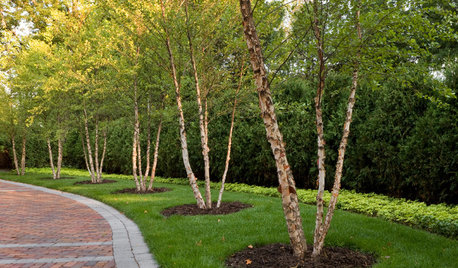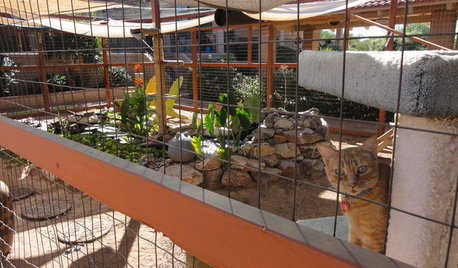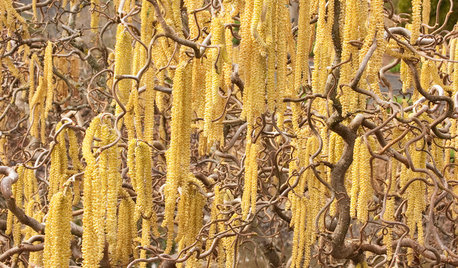Regrow lower leaves on Dieffenbachia
battery841
15 years ago
Related Stories

LANDSCAPE DESIGNGreat Design Plant: River Birch
Pick this rugged native tree for its intriguing peeling bark, soil adaptability or leaves that bring dappled shade to a garden
Full Story
FARMHOUSESHouzz Tour: The Farmhouse Revisited
In Rhode Island, a historic country house gets a gentle makeover
Full Story
PETSSee a Deluxe 'Catio' Built for Feline Fun
Sixteen lucky cats get the run of a protected outdoor patio with ramps, steps and even a koi pond
Full Story
GARDENING GUIDESGreat Design Plant: Harry Lauder's Walking Stick
"Gnarly" is a compliment here — a twisted form and yellow catkins make this plant unforgettable in the winter landscape
Full Story
HOUSEPLANTS8 Essentials for Healthy Indoor Plants
Houseplants add so much to our homes — and can thrive when grown in the right conditions. Keep these tips in mind
Full Story
FARM YOUR YARDHow to Grow Vegetables in Containers
Get glorious vegetables and fruits on your patio with a pro’s guidance — including his personal recipe for potting mix
Full Story
MOST POPULARPros and Cons of 5 Popular Kitchen Flooring Materials
Which kitchen flooring is right for you? An expert gives us the rundown
Full Story
PETSGarden Alert: 22 Plants to Keep Away From Pets
Avoid potential danger by keeping dogs and cats away from these landscaping and houseplant favorites
Full Story
FARM YOUR YARDHow to Farm Your Parking Strip
Get an up-close look at a thriving street-side edible garden, one of many sprouting up in Seattle
Full Story
GARDENING GUIDES9 Low-Growing Hedges That Make Good Neighbors
Define garden areas or borders without blocking the view, with these evergreen shrubs that take kindly to trimming
Full StoryMore Discussions








Mentha
jeannie7
Related Professionals
Glassmanor Landscape Architects & Landscape Designers · Mitchellville Landscape Architects & Landscape Designers · Mooresville Landscape Contractors · Wakefield Landscape Contractors · Byram Landscape Contractors · Framingham Landscape Contractors · Fruit Heights Landscape Contractors · Mahwah Landscape Contractors · Middleton Landscape Contractors · Salem Landscape Contractors · Shirley Landscape Contractors · Stony Brook Landscape Contractors · Tewksbury Landscape Contractors · Westchester Landscape Contractors · Yuba City Landscape Contractorsbattery841Original Author
rasha_derbala_GMAIL_COM
dellis326 (Danny)
Tiffany, purpleinopp Z8b Opp, AL
Debbie
Debbie
tapla (mid-Michigan, USDA z5b-6a)